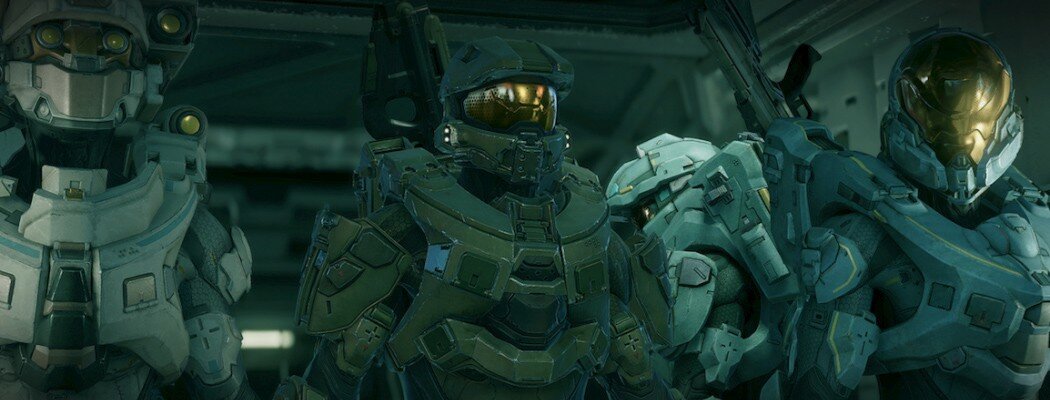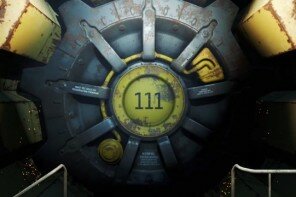Halo 5: Guardians is here, and we can’t say we weren’t warned.
Warned about what, exactly? Oh, you’ll see. Just sit here with this pregnant pause for a while. Slouch back in your seat, relax your body, and just sit with it.
Just sit with it.
Just… sit.
Sit.
Are you frustrated yet? Good, let’s begin.
It’s easy to forget that this is the second Halo in a trilogy (the Reclaimer Saga) and, just like Halo 2 before it, Guardians doesn’t exist in a self-contained state. It ends, altogether too abruptly, with the immediate and disconcerting knowledge that the fight won’t be finished on the Xbox One until only gods-know-when.
So we know there’s a pattern. Halo: Combat Evolved and Halo 4 could have stood alone and still felt like a complete campaign experience. Halo 2 didn’t, and Halo 5 doesn’t either. So you’re gonna have to wait.
My one and only concern is that Halo’s audience needs to care long enough to survive the wait, and that depends on how much they can get behind the new guy. Like Halo 2, Guardians is played through the eyes of two protagonists. Like Halo 2, one is Blue Team’s leader, Master Chief. The other, Osiris Team’s leader Spartan Locke, is clearly important to the story’s future. Can we be friends?
I think we can, and here’s why:
Three reasons Jameson Locke is an A+ badass
- He has the Artemis scanner
We’re used to the Halo games being littered with little technical easter eggs that reveal additional storyline data – usually in the form of terminals. We’re also used to them being bloody hard to find. The Master Chief still has to follow his nose on these things, but Locke was a SUPER SPY at his old job and has a scanner that does the work of finding hidden stuff for you. - He was a SUPER SPY
Players should know enough about the Office of Naval Intelligence (ONI) by now to know they’re a dangerous, shady bunch of cats. Jameson Locke was an assassin, but even better, he was an assassin with a name that sounds like a limited edition whisky. - He tells Nathan Fillion what to do
A veteran of Halo 3: ODST and the firefight mode in Halo: Reach, Edward Buck was your everyday, run-of-the-mill Marine of legendary status. If he was any better, his Reach bio stated, he’d be a Spartan. Nathan Fillion’s character is a Spartan now, and a fantastic one at that. He’s ferocious in the field, he’s hilarious over the intercom, and he’s got more experience than anyone else in Osiris. Still, he plays second banana to Locke.
Taking Locke to heart is going to be very important for the life of this universe. Where Halo 2 didn’t leave many questions on the lips of its fans, Guardians ends with so many cards still face-down on the table. To add confusion to the frustration, some aspects of the pre-launch seemed to go unfulfilled during the course of the game. Were we actually seeing previews of Halo 6, or was there more blood on the 343 studio floor than the developers intended to spill?
Only time, frustrating time, will tell. All I know is that the Halo 5 I was expecting to play was not the Halo 5 that I played.
My consolation is in knowing that this Halo 5, the real one, is one hell of a show.
Halo 5‘s campaign spans over more than a dozen missions, which is a new benchmark for the series and takes a little getting used to. Not all of them are full-length, though. A handful are almost like home-base situations where you need to walk to Point A to talk to Person B, and then climb something to speak to Alien C about Problem D. You get achievements for doing that, which feels a bit like the participation award you got for not having a hernia on school athletics day, but Gamerscore is Gamerscore. Gimme.
The fireteam dynamic of Halo: Reach is back, and this time you can add up to three remote players to your campaign. Blue Team’s base skill levels are a little different to Osiris’, and only Locke’s team can scan the environment for clues.
What else is new? I’m glad you asked:
The best new stuff in Halo 5
- What is dead may never die
Like it does in Gears of War, falling in combat doesn’t necessarily mean the end in Guardians. After your shields and health have been depleted, your armour goes into stasis and a countdown begins. If a teammate can revive you before that countdown ends, you’ll rise again on the spot. Does it make Legendary mode any easier? Hell no. In fact, the promise of a battlefield resurrection can lure players into a false sense of security. - It’s like the NRL, but with guns
If you run full-tilt at an enemy and whack the melee button, you’ll do a Spartan Charge and hopefully knock off a few layers of their armour. If you hit a weak enemy, you’ll kill them outright. It’s a fantastic way to break an opponent’s momentum and stun them witless. You can also use this move to bash your way into secret tunnels and caches. It ain’t exactly Tomb Raider, but it’s fun. - That armour thing I just mentioned
It’s only fair that you get a visual cue for all those rounds you’re pumping into an Elite or Promethean’s face, right? Shoot enough armour, and it begins to weaken and break. Shoot between the cracks, and the bad guys drop so much more quickly. Better yet, it adds a new dimension to the popular Spartan vs Hunter fights. - Are you getting smart?
Smart Link adds zooming to all weapons, and in some cases alters their performance. It’s also integral to the Spartans’ hover function. If you can’t buy more time with a good offence, buy it by catching a couple extra seconds’ worth of hangtime. - Equal opportunity transport
It’s a minor point, but worth talking about. Players have been able to steal Covenant vehicles since the series launched, but it’s a sight to behold when a Warthog full of Grunts comes blazing across the field of battle.
In an attempt to keep this as spoiler-free as possible, I’m not going to talk about the relationship between Chief and Locke, nor what’s come between them to force the greatest Spartan of them all to go on the run, hunted by a guy who signed up because of him. Approach the game with an open mind, and if you’re stuck wondering why Master Chief suddenly has three teammates who are his lifelong friends and as close as family, go look them up on the interwebs or read some of the older Halo novels. The relationship is covered only at the surface level in Halo 5.
Here is the truth of the matter: Halo 5 is a great game. It knows how to poke at its players’ emotions, although not necessarily always when, and there is enough forward-thought innovation that the leap from Xbox 360 to Xbox One has been a successful one. The opening cinematic alone could come with a sticker price of $29.95 and be worth it, because it’s that damned good. The campaign play is familar enough that veterans shouldn’t be frightened off, and it’s revamped enough that it doesn’t feel like a retread.
The fully-baked verdict: BUY IT – RENT IT – FORGET IT
Post Script: It’d be unfair to talk about the online multiplayer until the general public has gotten onboard. I’m sorry 343 Industries, but I think that’s fair enough after the disaster that was the Master Chief Collection. (Short story: Matchmaking was totally borked.)
While the Halo 5 campaign is a robust and engaging (if occasionally baffling) experience, the only fair way to assess multiplayer is to get amongst it when everyone is able to be in the mix.








